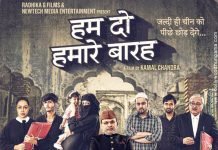In the past week, two films have faced stays in India from different courts, raising significant concerns about sanctity of the CBFC certificate, the state of free speech and its implications for democracy. These stay orders highlight a troubling trend where judicial interventions are increasingly curbing creative expression.
Maharaj: Gujarat High Court Stay
The Gujarat High Court has stayed the release of the film Maharaj, which was scheduled to be released on Netflix on 14th June 2024 fearing it likely to incite feelings of hatred and violence against the Pustimargi sect. The Petitioners claim that the film is based on “Libel Case 1862” rendered by English Judges. Details of this Maharaj Libel case can be found here. The petitioners submitted that the excerpts contain scandalous and defamatory language, which affects the Pustimargi sect as a whole. It was further submitted that the release of the movie on the basis of Maharaj Libel Case of 1862, is likely to incite feelings of hatred and violence against the Pustimargi sect which, would be in breach of code of ethics under the Information Technology (Intermediary Guidelines and Digital Media Ethics Code) Rules, 2021and the Self-regulation Code of Over-the-Top Technology (OTT).
The Gujarat High Court order which can be viewed here, does not delve into any detailed reasoning while granting the ad-interim reliefs sought by the petitioners. The matter is next listed on 18th June, 2024.
As per reports, the producers approached the Gujarat HC on 14th June pleading for the stay to be lifted. They claim that the film is based on the book “Maharaj” written by a Gujarati journalist in 2013 and there has been no disturbance since then. They further claim that the book and the film have been written by people following Vaishnavism, and there is no reason they would depict their own faith in a bad light. Additionally, they assert that the film is not based on the court case but merely references it in the storyline, and therefore, the fears of the Pustimargis are misplaced.
Admittedly, the petitioners were aware about the Film at least by April 2024 (see para 4 of the order). The petitioners still opted to approach the court at the eve of the film’s release, thereby denying a fair opportunity for the producers to defend their case.
The Court ought to have at least provided some rationale in terms of how would a film which is allegedly based on a book published in 2013 and/ or real-life Libel Case 1862 (thereby being a public record material), could incite hatred and violence against a particular sect?
It would be relevant to highlight that in the case of Khushwant Singh and Anr. Vs. Maneka Gandhi [AIR2002Delhi58], Maneka Gandhi had filed a suit for injunction against the autobiography of Khushwant Singh titled ‘Truth, Love and a Little Malice’ claiming that certain extracts therein concerning her were derogatory and defamatory. In an appeal filed by Khushwant Singh against an ex-parte injunction passed by the single bench, the division bench of the Delhi High Court took into account that the portions which Maneka Gandhi had an issue with were matters of public knowledge and had been in public domain for several years to which she had at no stage raised any objections or initiated any proceedings when those publications were brought out and by her silence had acquiesced and accepted the same. The Court had thus refused injunction and stated that Maneka Gandhi would have a right to claim damages in the tort for breach of privacy or defamation.
Most importantly, the film was granted certification by the CBFC in May 2023. See here.
Deriving strength from the provisions of The Cinematograph Act, 1952, the CBFC, as the supreme authority on certifying films, can deny a film certification if such film is considered capable of hampering the security of the state, causing defamation and/or disruption of public order and morality or is likely to incite the commission of any offence. Consequentially, a certificate passed by the CBFC not only validates a cinematograph film as fit for theatrical release and public exhibition, but it also renders such validation irrefutably conclusive, unless an appeal is put forth for the revision of such certificate, or an application is filed for the suspension or revocation of the certificate.
The Supreme Court in the matter of Prakash Jha Productions & Anr V/s Union of India & Ors [2011 (8) SCC 372] has held that once the film has been certified by the Censor Board, it is the duty of the state government to effectively maintain law and order once such film has been publicly exhibited.
The grant of the certificate by CBFC is an acknowledgement of the fact that the film producers have satisfied the limitations imposed by Article 19(2) of the Constitution. The Supreme Court has clearly laid down in a series of decisions that if the film is unobjectionable and cannot constitutionally be restricted under Article 19(2), freedom of expression cannot be suppressed on account of threat of demonstration and processions or threats of violence. That would tantamount to negation of the rule of law and surrender to black mail and intimidation.
It is crucial to note that reportedly, the film is based on real-life events and was intended for release on Netflix, which is a SVOD platform, where viewers have the choice to watch or skip the content. This preemptive stay appears excessive. The stay raises questions about the appropriateness of such censorship and judicial overreach.
Hon’ble Supreme Court in Union of India vs. K.M. Shankarappa held that ‘Once an Expert Body has considered the impact of the film on the public and has cleared the film, it is no excuse to say that there may be a law and order situation. It is for the concerned State Government to see that the law and order is maintained. In any democratic society there are bound to be divergent views. Merely because a small section of the society has a different view, from that as taken by the Tribunal, and choose to express their views by unlawful means would be no ground for the Executive to review or revise a decision of the Tribunal. In such a case, the clear duty of the Government is to ensure that law and order is maintained by taking appropriate actions against persons who choose to breach the law.’ Similar views have been taken by the courts in India time and again, including by The Supreme Court in another case of S. Rangarajan and Ors. Vs. P. Jagjevan Ram and Ors where the exhibition of a film after it was certified by CBFC was banned in the state of Tamil Nadu; the Supreme Court in no uncertain terms held:
“48.We are amused yet troubled by the stand taken by the State Government with regard to the film which has received the National Award. We want to put the anguished question, what good is the protection of freedom of expression if the State does not take care to protect it? If the film is unobjectionable and cannot constitutionally be restricted under Article 19(1), freedom of expression cannot be suppressed on account of threat of demonstration and processions or threats of violence. That would tantamount to negation of the rule of law and a surrender to black mail and intimidation. It is the duty of the State to protect the freedom of expression since it is a liberty guaranteed against the State. The State cannot plead its inability to handle the hostile audience problem. It is its obligatory duty to prevent it and protect the freedom of expression.
50.Freedom of expression which is legitimate and constitutionally protected, cannot be held to ransom by an intolerant group of people. The fundamental freedom under Article 19(1)(a) can be reasonably restricted for the purposes mentioned in Article 19(2) and the restriction must be justified on the anvil of necessity and not the quicksand of convenience of expediency. Open criticism of Government policies and operations is not a ground for restricting expression. We must practice tolerance to the views of others. Intolerance is as much dangerous to democracy as to the person himself.”
Hamaare Baraah: Supreme Court stay
In another case pertaining to the film Hamare Baraah, the Supreme Court of India, on 13 June 2024, addressed the case concerning the film “Hamare Baarah,” where petitioner Azhar Basha Tamboli challenged interim orders from the Bombay High Court allowing the film’s release with certain conditions. Initially, the High Court had restrained the film’s exhibition, but later modified its order, permitting the release after specific dialogues were agreed to be deleted by the film’s producer and re-certification to be provided by the CBFC. The Supreme Court did not delve into the case’s merits but requested the High Court to expedite its decision on the pending writ petition, maintaining the suspension of the film’s public screening until the petition’s resolution. Read the Supreme Court order here. The Bombay HC order permitting release can be viewed here. (Detailed post on this case to follow)
Conclusion
The recent stay orders on release of Maharaj and Hamaare Baraah illustrate a troubling trend of judicial overreach in India, posing significant threats to free speech and democratic principles. The judiciary must balance the need to maintain public order with the imperative to protect artistic and expressive freedoms. By undermining the sanctity of the CBFC certification, preemptively banning films, these decisions could stifle creative expression and narrow the diversity of narratives essential to a vibrant democracy.












